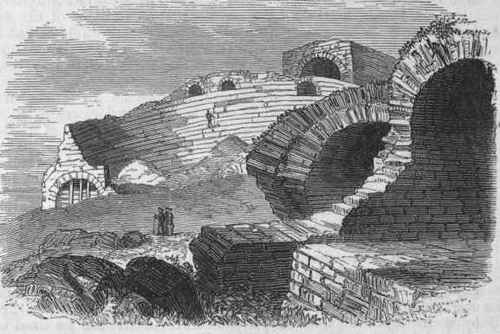Cahors
Description
This section is from "The American Cyclopaedia", by George Ripley And Charles A. Dana. Also available from Amazon: The New American Cyclopędia. 16 volumes complete..
Cahors
Cahors, a town of France, capital of the department of Lot, on the right bank of the river Lot, which encloses the town on three sides, 60 m. N. of Toulouse; pop. in 1866, 14,-115. It stands on a rocky eminence, and has steep and narrow streets. Vestiges of a Roman amphitheatre, aqueduct, and portico are still to be seen. Of the three bridges over the Lot, one, probably built in the 14th century, is surmounted by three towers, to defend the approach to the town: Cahors is the seat of a bishopric, the occupant of which during the middle ages held the title of count, and wore a sword and gauntlets, which he deposited on the altar when he said mass. The cathedral is a large and ancient building. The old episcopal palace is now the prefect's residence. Among the public institutions are a theological seminary, two public libraries, a lyceum, an agricultural society, provincial college, and theatre. Pope John XXII. and Joachim Murat were born here. The university, which was founded in the 14th century, but suppressed after the revolution of 1789, had the famous jurist Cujas as one of its professors, and among its pupils was Fenelon, whose monument is placed in front of the college.
There are some manufactures of cloth and other woollen stuffs, and a considerable trade in wines, leaf tobacco, brandies, oil, and truffles. During the middle ages Cahors was famous for its usurers. The capture of Cahors in 1580 was one of the most brilliant exploits of Henry of Navarre.

Roman Amphitheatre at Cahors.
Continue to:


